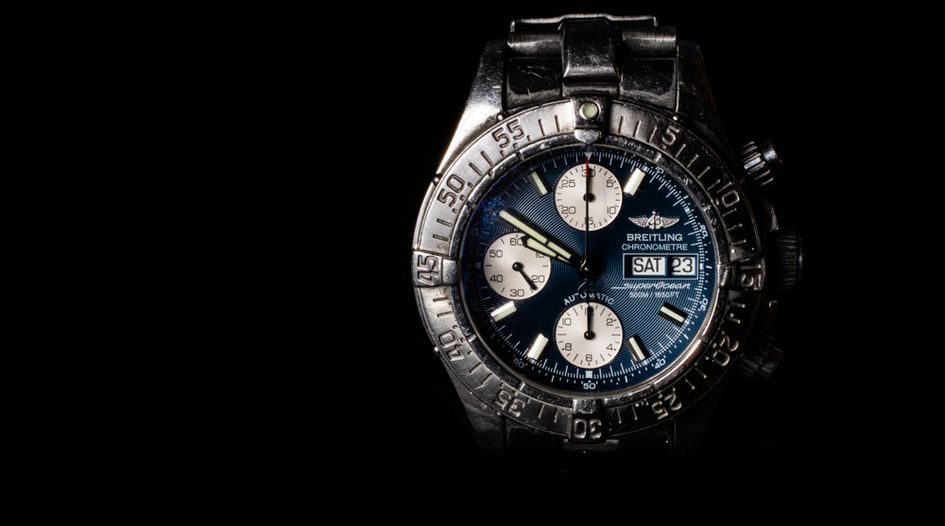Breitling prevails with good-faith defence in Second Circuit infringement dispute ruling

The US Court of Appeals for the Second Circuit has affirmed a district court’s grant of summary judgment to Breitling, holding that its use of a registered and incontestable trademarked term was fair use because it was descriptive and used in good faith (Solid 21 Inc v Breitling USA Inc, case 22/366, 14 March 2024, Wesley, Sullivan, JJ, Park, J, dissenting).
The case analyses the fair-use defence’s good-faith prong, which, as the Second Circuit majority noted, “is not litigated frequently”. This provoked Judge Park’s dissent, arguing that the majority’s analysis attempts to resolve factual disputes about Breitling’s intentions, which should instead go to a jury.
Case background
‘Red gold’ and ‘rose gold’ are terms used to describe a gold-copper alloy that causes gold to have a pinkish hue. Solid 21 is a luxury watch and jewellery business that sells a collection of these products under the mark RED GOLD, which was registered in 2003 and now has incontestable status. Breitling is a Swiss company that makes and sells luxury watches, some of which it advertises as available in red gold, among other colours.
Solid 21 filed a trademark infringement suit against Breitling, alleging that its use of the term ‘red gold’ was “likely to cause confusion, reverse confusion, mistake, and/or deception as to the source” of Breitling’s watches. Breitling moved for summary judgment on the grounds that ‘red gold’ is generic, and that the trademark registration was invalid or that its use of the term fell under the Lanham Act’s fair-use defence, which allows use of a protected mark to describe one’s goods so long as it is in good faith and not used as a mark.
The dispute
Initially, the district court denied Breitling’s motion for summary judgment, finding that it could have used other terms like ‘rose gold’ to describe its products and thus it did not satisfy the descriptive use requirement. However, on reconsideration, the district court decided that the mere existence of alternative terms for the alloy did not preclude summary judgment, and that Breitling’s materials clearly showed that it was using “red gold” descriptively to indicate hue. The district court also found that Breitling satisfied the good-faith element, even if it was aware of Solid 21’s RED GOLD mark. Solid 21 appealed.
Court decisions
The Second Circuit affirmed, finding that Breitling’s advertising materials clearly showed that it used “red gold” as a descriptor for colour and not as a mark. The court rejected the argument that this conclusion was undermined by the availability of the term ‘rose gold’ as an alternative descriptor, and pointed out that Solid 21 bears the risk of some consumer confusion in choosing to trademark a descriptive term that describes a colour of metal.
Finally, the court found that Breitling’s use of “red gold” was in good faith, despite Solid 21’s argument that it was in bad faith because Breitling had constructive or actual knowledge of Solid 21’s trademark. Breitling did not conduct a trademark search before using the term ‘red gold’, it began using it two decades after Solid 21 did, and it had the alternative “rose gold” descriptor available. The court pointed out that none of these facts are dispositive on the issue of bad faith because they do not show that Breitling intended to confuse customers as to source or sponsorship. Rather, the court explained that red gold is just a way to describe the colour of the watches.
The Second Circuit observed that descriptiveness and good faith “often travel together”, but rejected the dissent’s complaint that it had effectively collapsed the latter into the former. The court held out the possibility that a defendant can use a term descriptively and yet do so in bad faith. However, this was not the case here.
In his dissent, Judge Park argued that the majority improperly resolved “factual disputes about Breitling’s mental state at summary judgment”. He stated:
…the record shows that Breitling (1) relatively recently began using the ‘red gold’ mark, (2) without conducting a trademark search, (3) possibly knowing of Solid 21’s use, (4) despite previously using a substitute ‘rose gold.’ In response, Breitling offers no explanation for the change whatsoever.
Key takeaways
When an incontestable mark is used as a descriptive term, a defendant may be able to prevail on a fair-use defence. Trademark owners using weak or descriptive marks bear the risk of some confusion when their term is used descriptively and in good faith.
WTR recommends
A ‘tail’ of enforcing descriptive marks: lessons from VETSURE v PETSURE
Rolex loses out on disgorgement of profits from laches defence in Fifth Circuit ruling
SANODIN v SANOID, or the difficulties of protecting descriptive marks
This is an Insight article, written by a selected partner as part of WTR's co-published content. Read more on Insight
Copyright © Law Business ResearchCompany Number: 03281866 VAT: GB 160 7529 10